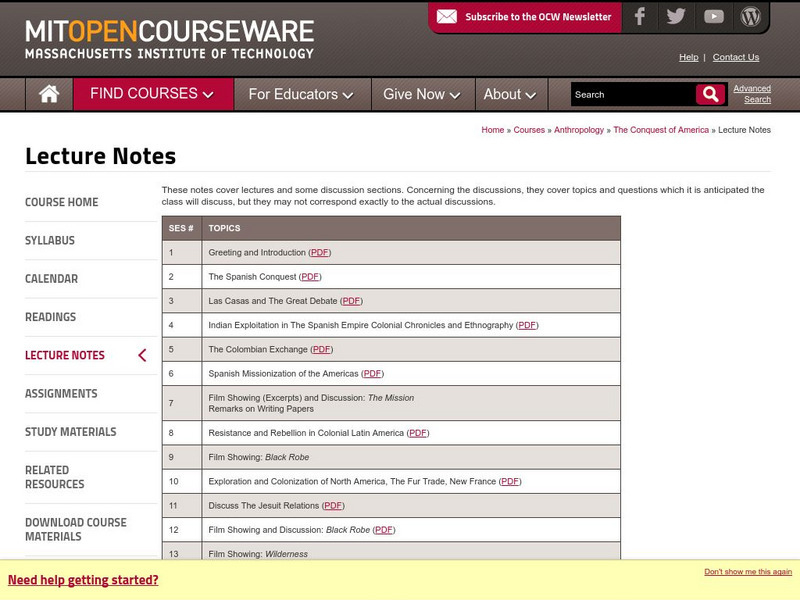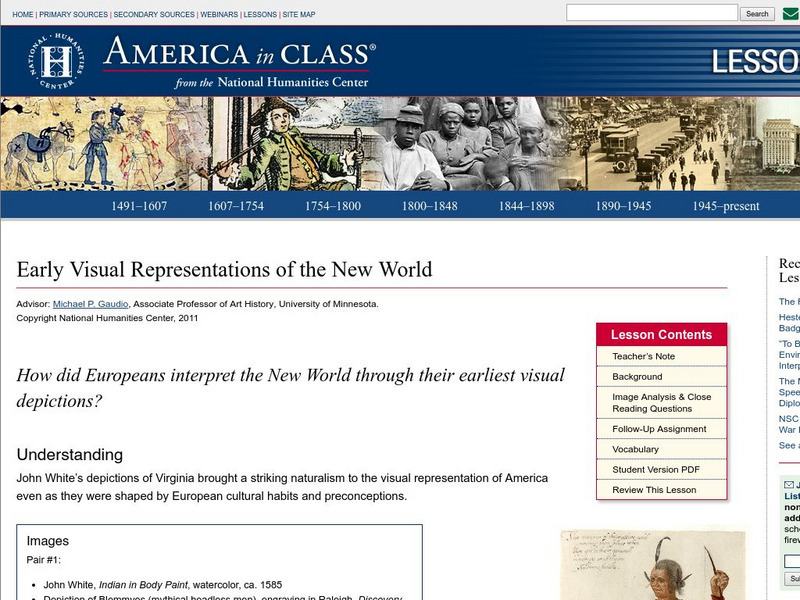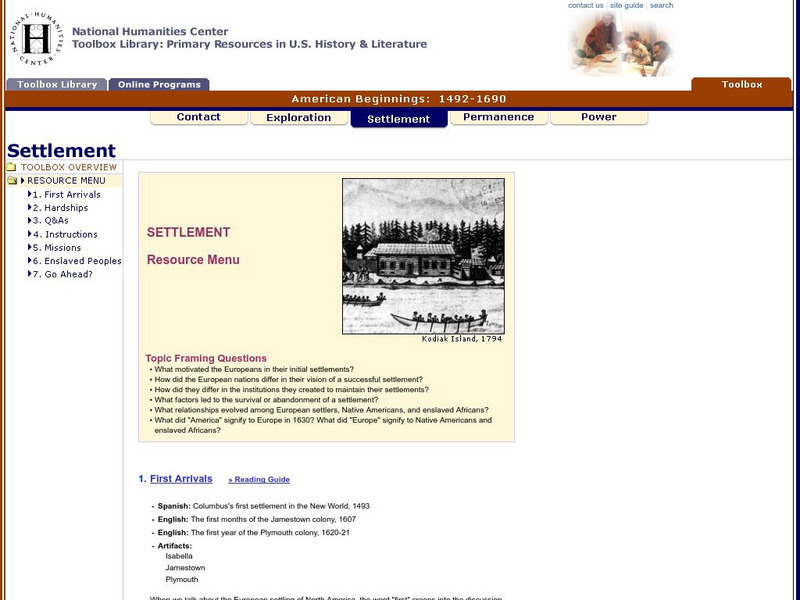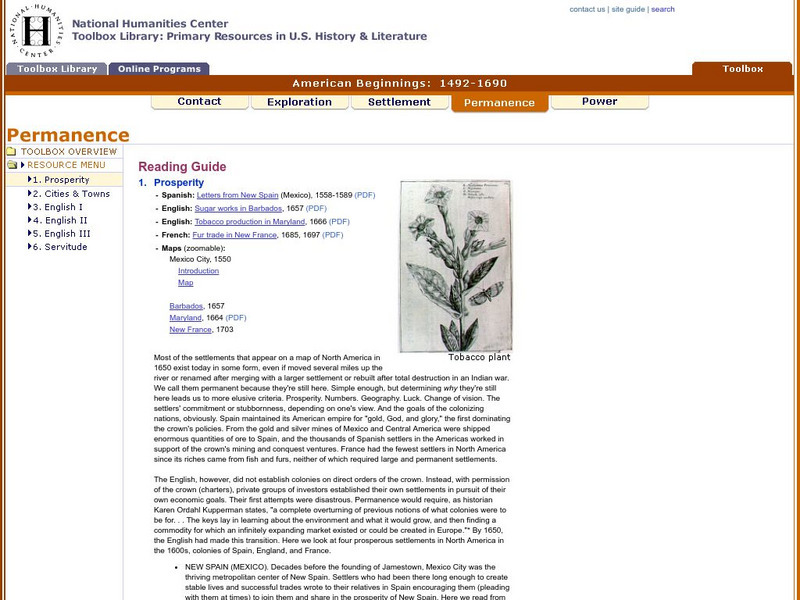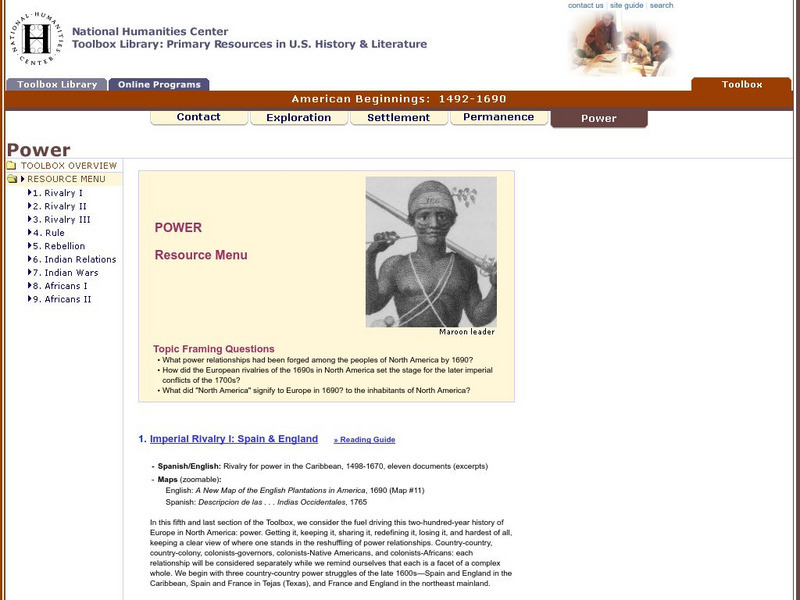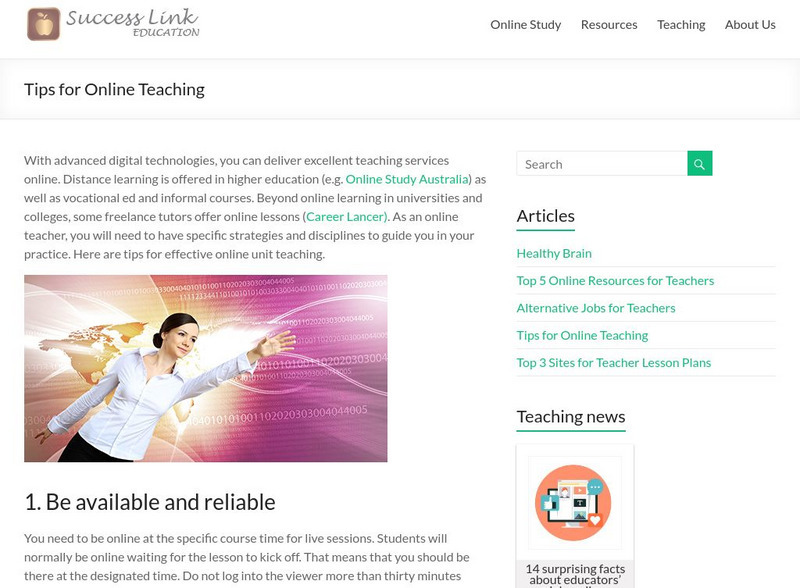Massachusetts Institute of Technology
Mit: Open Course Ware: The Conquest of America
Consider these resources while illustrating the natives' response to Europeans settling into the Americas.
University of Groningen
American History: Outlines: The First Europeans
The first Europeans to arrive in North America -- at least the first for whom there is solid evidence -- were Norse, traveling west from Greenland, where Erik the Red had founded a settlement around the year 985. In 1001 his son Leif is...
Texas Education Agency
Texas Gateway: Exploration and Colonization of America
Given short summaries about the reasons for European exploration and colonization of North America, students will compare English and Spanish settlements in the New World.
National Humanities Center
National Humanities Center: America in Class: Early Visual Representations of the New World
A activity that examines how Native Americans were portrayed by artists in the sixteenth century, whose aim was to convey their appearance to a European audience, and thereby encourage investment in future New World explorations. By...
Smithsonian Institution
National Museum of American History: Jamestown, Quebec, Santa Fe: Three North American Beginnings
Explore the origins of Canada and the United States as Jamestown, Quebec, and Santa Fe celebrate their 400th anniversary.
National Humanities Center
National Humanities Center: Toolbox Library: Contact, American Beginnings: 1492 1690
Thirty one primary sources including historical documents, literary texts, and visual images from which to explore European reactions to the land and the people of the New World and the Natives' responses to European contact and conquest.
National Humanities Center
National Humanities Center: Toolbox Library: Settlement, American Beginnings: 1492 1690
Thirty primary sources-historical documents, literary texts, and visual images-that explore motivations, visions, patterns, goals, challenges, and relationships with indigenous peoples offered by Europeans in their settlement of the New...
National Humanities Center
National Humanities Center: Toolbox Library: Missions, American Beginnings: 1492 1690
A Spanish Franciscan and a French Jesuit report on the reciprocal relationship between natives and Catholic missionaries as Europeans settled New France and New Spain.
National Humanities Center
National Humanities Center: Toolbox Library: Prosperity, American Beginnings: 1492 1690
Four original source accounts, and four related maps, of successful English, French, and Spanish settlements in North America and the Caribbean that explain the qualities of these settlements and their reasons for permanence and prosperity.
National Humanities Center
National Humanities Center: Toolbox Library: Cities & Towns, American Beginnings: 1492 1690
Four accounts of the visits to and growth of colonial cities in Spanish, British, and French New World settlements that demonstrate why certain communities developed successfully.
National Humanities Center
National Humanities Center: Toolbox Library: Power, American Beginnings: 1492 1690
Fifty seven primary sources-historical documents, literary texts, and visual images-and one secondary historical account that explore imperial conflict, European economic rivalry, and the impact of colonial rule on native peoples.
Library of Congress
Loc: American Memory Timeline: Colonial Settlement,1600s 1763
Read about the colonization in the New World by many European countries. Hyperlinks to you to more specific topics.
Library of Congress
Loc: The Cultures and Histories of the Americas
An online exhibit of a vast array of documents, artifacts, and maps detailing cultures in the Americas including the indigenous groups as well as Europeans after contact. From the Library of Congress.
Library of Congress
Loc: Exploring the Early Americas: Competition for Empire
Part of a larger site, the primary sources here deal with the competition among the European countries in establishing a foothold in the New World.
Other
Coastal Navigation and Exploration of the Monterey Bay
This site details the information known about California before 1769 based on the account of six explorers.
Success Link
Success Link: Explorer Poetry Booklet
After a study of explorers in the Americas, students write poetry to show what they know about individual explorers. This lesson plan gives guidelines, ways to adapt the lesson, a graphic organizer, and scoring guide.
Wisconsin Historical Society
American Journeys: Eyewitness Accounts Early American Exploration/settlement
A collaborative project of the Wisconsin Historical Society and National History Day, this site contains over 18,000 pages of primary source, eyewitness accounts of North American exploration starting with the Vikings.
Ducksters
Ducksters: Colonial America the Pilgrims and Plymouth Colony
Learn about the Eurpoean colonization of America.
McGraw Hill
Mc Graw Hill Higher Education: Old World, New Worlds
This article from McGraw-Hill Higher Education discusses European exploration in the late 1400s and 1500s and its impact on English colonization hundreds of years later.
Khan Academy
Khan Academy: Biombo With the Conquest of Mexico and View of Mexico City
The influence of Asian art on colonial Latin America is particularly evident in viceregal textiles, ceramics, and furniture. Some examples are the resplendent biombos, or folding screens, made in Mexico beginning in the seventeenth...
Khan Academy
Khan Academy: Introduction to the Spanish Viceroyalties in the Americas
When the Spanish Crown (the monarchy) learned of the promise of wealth offered by vast continents that had been previously unknown to Europeans, they sent forces to colonize the land, convert the indigenous populations, and extract...
Khan Academy
Khan Academy: Bernardino De Sahagun and Collaborators, Florentine Codex
The Florentine Codex contains an unparalleled wealth of information regarding the people and culture of central Mexico immediately preceding the Conquest and its discussion of the Conquest itself. View pictures and descriptions of the...
Curated OER
Macmillan/mc Graw Hill: The World, Vol. 1: Changing Ideas: Lesson 3 Quiz
Choose the correct answer for each of the five multiple choice questions to evaluate your understanding of trade and exploration.


